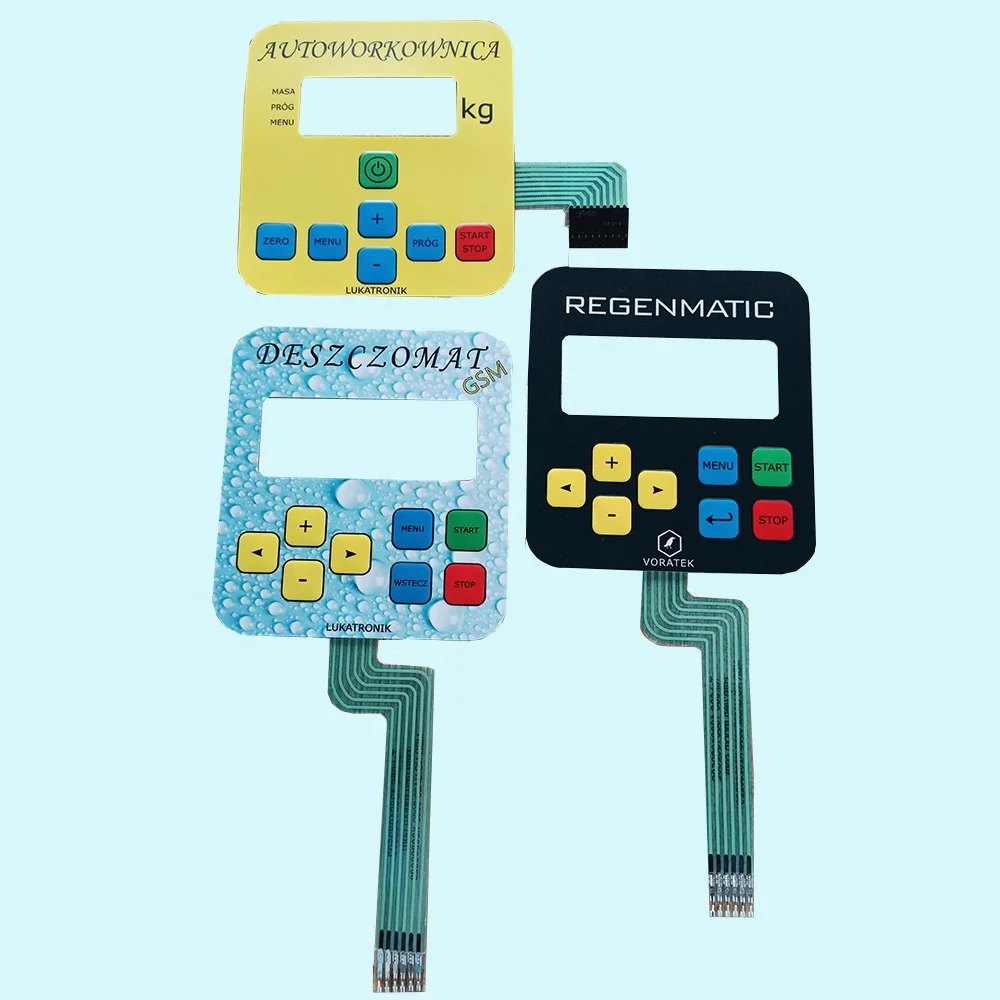Membrane Switch: A Comprehensive Guide to Its Uses and Applications
Membrane Switch: A Comprehensive Guide to Its Uses and Applications
Blog Article
Understanding Membrane Switches Over: The Trick to Reliable and long lasting Controls

What Are Membrane Switches?
Membrane layer buttons are a sophisticated option in the world of interface innovation, incorporating capability and layout perfectly. These devices work as a user interface in between individuals and electronic systems, incorporating numerous elements right into a portable layout. Commonly created from versatile, thin layers of materials, membrane layer switches are created to react to touch, enabling individuals to connect with machinery and digital gadgets successfully.
The main components of a membrane layer switch include a published circuit layer, visuals overlay, and a spacer layer that stops unintentional activation. The visuals overlay can be tailored to show brand name identity or customer preferences, improving aesthetics while ensuring functionality. Membrane layer switches are generally used in various applications, including clinical devices, consumer electronics, and industrial equipment, owing to their longevity and resistance to ecological factors such as moisture and dirt.
One of the vital advantages of membrane layer switches is their capacity to stand up to damage, making them suitable for high-traffic settings. Furthermore, they are light-weight and call for minimal space, permitting for ingenious styles in product growth. In general, membrane changes represent a functional and effective selection for modern-day electronic user interfaces, marrying innovation with user-centric design concepts.
Just How Membrane Layer Changes Job
The operation of membrane layer switches over joints on a basic yet effective system that translates customer input right into digital signals. When an individual presses the button, the leading layer deforms, enabling a conductive aspect in the circuit layer to make contact with a matching conductive pad on the bottom of the visuals overlay.
The style of membrane layer buttons can vary, yet they usually include domes or tactile elements to supply responses to the customer, improving the overall experience - membrane switch. The materials made use of in membrane buttons, such as polyester or polycarbonate, add to their toughness and resistance to ecological aspects, including wetness and dust. The printed circuits are typically enveloped, which safeguards them from wear and tear over time.
Benefits of Membrane Layer Switches

In addition, membrane buttons are understood for their sturdiness. Built from this website durable materials, they are resistant to dust, dampness, and physical wear, which considerably extends their life-span contrasted to typical mechanical buttons. This toughness makes them especially ideal for high-traffic environments and applications needing long life.
Another significant benefit is the simplicity of cleansing and maintenance. The smooth surface area of membrane layer switches over lessens dust buildup and is commonly unsusceptible spills, making them suitable for setups that call for constant sanitization.
In addition, membrane switches offer a streamlined account, causing a thinner style that can be incorporated into different devices without adding mass. This attribute not only boosts the aesthetic appeal yet likewise contributes to a much more ergonomic item style.
Applications of Membrane Layer Buttons
Straightforward and versatile, membrane buttons find applications across a vast array of sectors, including medical tools, customer electronic devices, and commercial tools. In the clinical field, these switches are integral to gadgets such as analysis tools, client surveillance systems, and infusion pumps, where dependability and ease of cleansing are important. Their ability to endure rough environments and preserve capability makes them ideal for such applications.

In consumer electronics, membrane layer buttons are used in products like microwaves, cleaning makers, and push-button controls - membrane switch. Their smooth layout allows for intuitive user interfaces, improving the overall individual experience while giving longevity and resistance to tear and put on
Commercial tools additionally gains from membrane layer switches, specifically in control panels for equipment and automation systems. These switches supply protection against dirt and wetness, guaranteeing consistent performance in challenging settings. Moreover, their adjustable features permit producers to customize them to particular functional needs, boosting performance and functionality.
Choosing the Right Membrane Layer Switch Over
When choosing a membrane button, it is vital to take into consideration various aspects that affect performance and suitability for certain applications. The key considerations consist of environmental problems, tactile responses, longevity, and style specifications.
First, evaluate the operating atmosphere; buttons subjected to moisture, chemicals, check over here or extreme temperatures call for specific materials to make certain durability and performance. Next off, evaluate the requirement for tactile responses. Relying on individual communication, some applications may take advantage of a tactile feedback to verify activation, while others may favor a non-tactile style for aesthetic factors.
Toughness is another essential element; membrane see this here layer buttons should be made to stand up to regular use, influences, and abrasion. Make sure the chosen switch can withstand the expected lifecycle, particularly in high-usage scenarios.
Final Thought
In verdict, membrane layer changes offer as crucial elements in the style of resilient and trusted control systems throughout different markets. The versatility of membrane changes allows for tailored services that fulfill certain operational requirements, reinforcing their value in contemporary innovation.
Membrane layer switches over stand for a crucial facet of contemporary interface layout, blending capability with resilience in various applications.Membrane layer buttons are an advanced option in the realm of individual interface innovation, incorporating capability and design flawlessly. Commonly created from versatile, thin layers of materials, membrane buttons are made to react to touch, allowing customers to communicate with equipment and electronic gadgets efficiently.
The layout of membrane layer switches can differ, however they usually include domes or tactile elements to offer comments to the individual, boosting the overall experience.In conclusion, membrane layer changes offer as essential parts in the layout of long lasting and trusted control systems throughout numerous industries.
Report this page